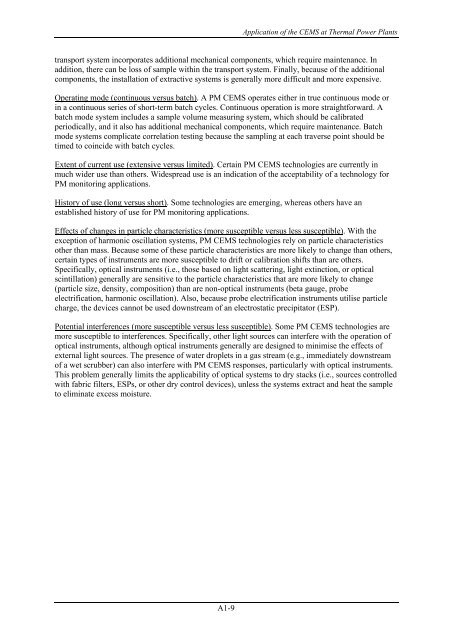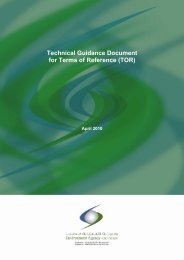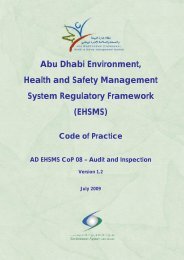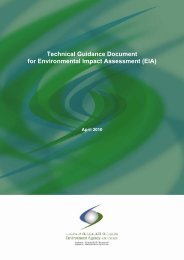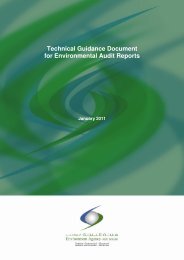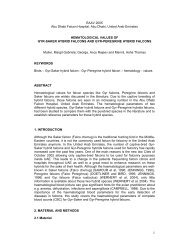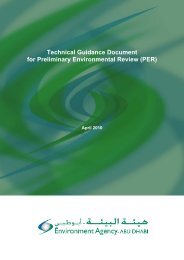Standard Operating Procedure (SOP) for Compliance Monitoring ...
Standard Operating Procedure (SOP) for Compliance Monitoring ...
Standard Operating Procedure (SOP) for Compliance Monitoring ...
You also want an ePaper? Increase the reach of your titles
YUMPU automatically turns print PDFs into web optimized ePapers that Google loves.
Application of the CEMS at Thermal Power Plants<br />
transport system incorporates additional mechanical components, which require maintenance. In<br />
addition, there can be loss of sample within the transport system. Finally, because of the additional<br />
components, the installation of extractive systems is generally more difficult and more expensive.<br />
<strong>Operating</strong> mode (continuous versus batch). A PM CEMS operates either in true continuous mode or<br />
in a continuous series of short-term batch cycles. Continuous operation is more straight<strong>for</strong>ward. A<br />
batch mode system includes a sample volume measuring system, which should be calibrated<br />
periodically, and it also has additional mechanical components, which require maintenance. Batch<br />
mode systems complicate correlation testing because the sampling at each traverse point should be<br />
timed to coincide with batch cycles.<br />
Extent of current use (extensive versus limited). Certain PM CEMS technologies are currently in<br />
much wider use than others. Widespread use is an indication of the acceptability of a technology <strong>for</strong><br />
PM monitoring applications.<br />
History of use (long versus short). Some technologies are emerging, whereas others have an<br />
established history of use <strong>for</strong> PM monitoring applications.<br />
Effects of changes in particle characteristics (more susceptible versus less susceptible). With the<br />
exception of harmonic oscillation systems, PM CEMS technologies rely on particle characteristics<br />
other than mass. Because some of these particle characteristics are more likely to change than others,<br />
certain types of instruments are more susceptible to drift or calibration shifts than are others.<br />
Specifically, optical instruments (i.e., those based on light scattering, light extinction, or optical<br />
scintillation) generally are sensitive to the particle characteristics that are more likely to change<br />
(particle size, density, composition) than are non-optical instruments (beta gauge, probe<br />
electrification, harmonic oscillation). Also, because probe electrification instruments utilise particle<br />
charge, the devices cannot be used downstream of an electrostatic precipitator (ESP).<br />
Potential interferences (more susceptible versus less susceptible). Some PM CEMS technologies are<br />
more susceptible to interferences. Specifically, other light sources can interfere with the operation of<br />
optical instruments, although optical instruments generally are designed to minimise the effects of<br />
external light sources. The presence of water droplets in a gas stream (e.g., immediately downstream<br />
of a wet scrubber) can also interfere with PM CEMS responses, particularly with optical instruments.<br />
This problem generally limits the applicability of optical systems to dry stacks (i.e., sources controlled<br />
with fabric filters, ESPs, or other dry control devices), unless the systems extract and heat the sample<br />
to eliminate excess moisture.<br />
A1-9


